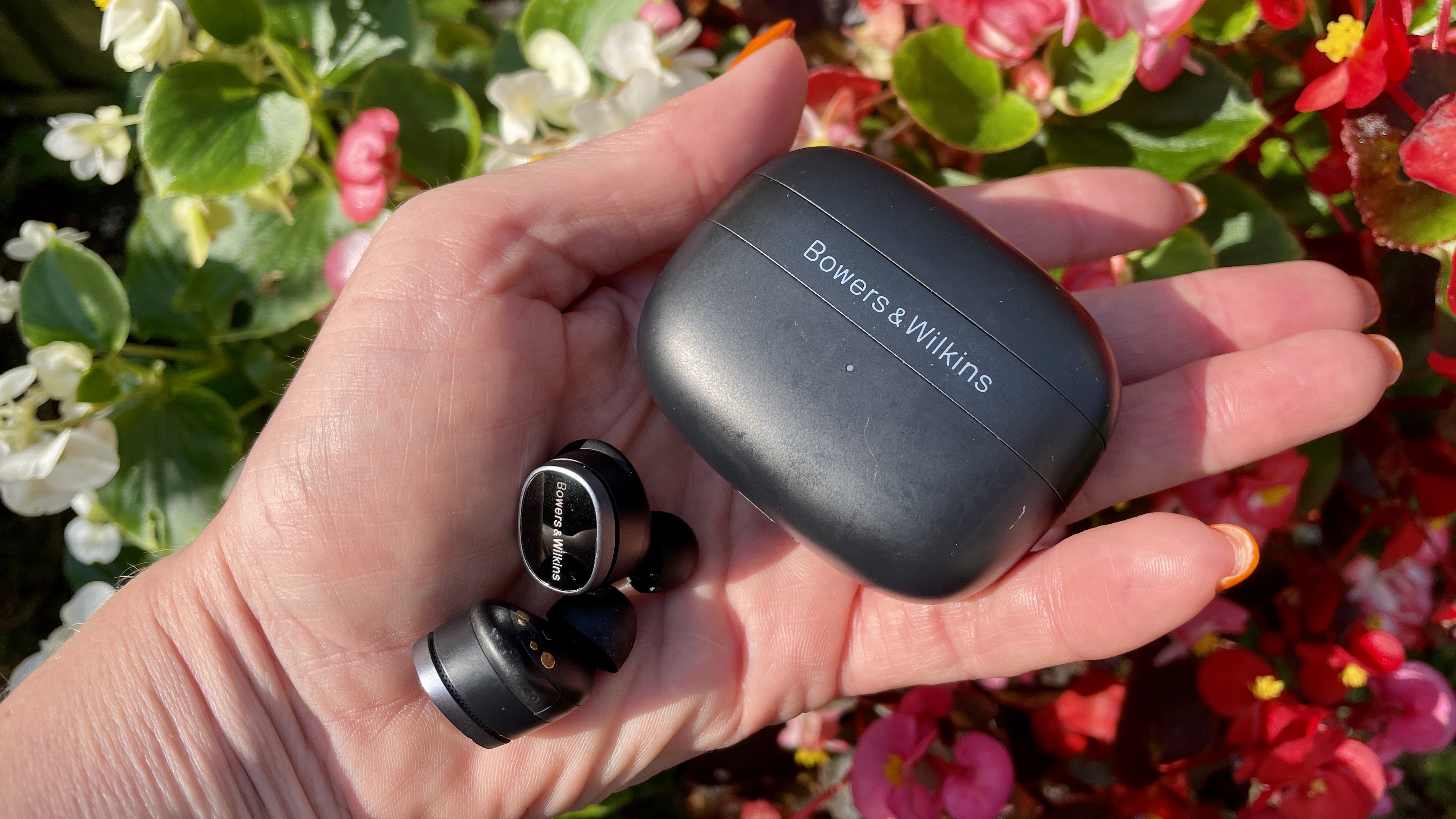
Bowers & Wilkins Pi8: Two-minute review
I was once told that only a poor writer starts with a quote. So forgive me, because this one (from author and leadership mentor John C. Maxwell) explains my thoughts on Bowers & Wilkins' Pi8 far better than I could: A man must be big enough to admit his mistakes, smart enough to profit from them, and strong enough to correct them.
A lot has been corrected here, and it takes a big man (or woman, or person) to do it. TechRadar reviews typically begin with the bold claims made by a product's marketing team, and end with whether or not we felt the performance lived up to the hype. But B&W has approached this iteration with such humility, honesty and determination (rather than nonchalance and bravado) that I cannot do that. What I can tell you – and with some joy – is that the Pi8 are some of the best noise-cancelling earbuds I've ever tested.
They are, as you'll probably have guessed, completely unlike their older siblings. Gone are the Swiss watch-style embellishments and metallic circular top plates of the Pi7 and Pi5 (and the Pi5 S2 and Pi7 S2), which looked beautiful in my hand but didn't work in my ear canal. Bowers & Wilkins has effectively started from scratch this time around, deploying the services of the same in-house team that created its PX7 S2 and sublime PX8 over-ear headphones – a set of cans I said "look stunning and sound even better" under intense review.
Has the gamble worked? While I'd love to stretch this two-minute verdict out, let's face it, the star rating at the top of this review is kind of a giveaway. Yes, it has. The Bowers & Wilkins Pi8 are now as physically comfortable and secure as they are sonically detailed and dynamically agile.
Also, you now get on-ear volume control. I've been knocking B&W's decision to leave this off the spec sheet since 2021, which meant that even with the company's most elite earbuds, I had to rifle through my bag to alter the volume, while propositions at a fifth of the price could do it. And now that's fixed. Okay, you have to choose whether you want the tap-and-hold gesture of either earbud to tweak volume (left down; right up) or scroll between ANC and passthrough in the left bud, and voice assistant activation in the right, but I don't care – at least, not enough to knock a half-star off.
The Bowers & Wilkins Pi8 are a five-star set of earbuds all day long, even at their considerable price point.
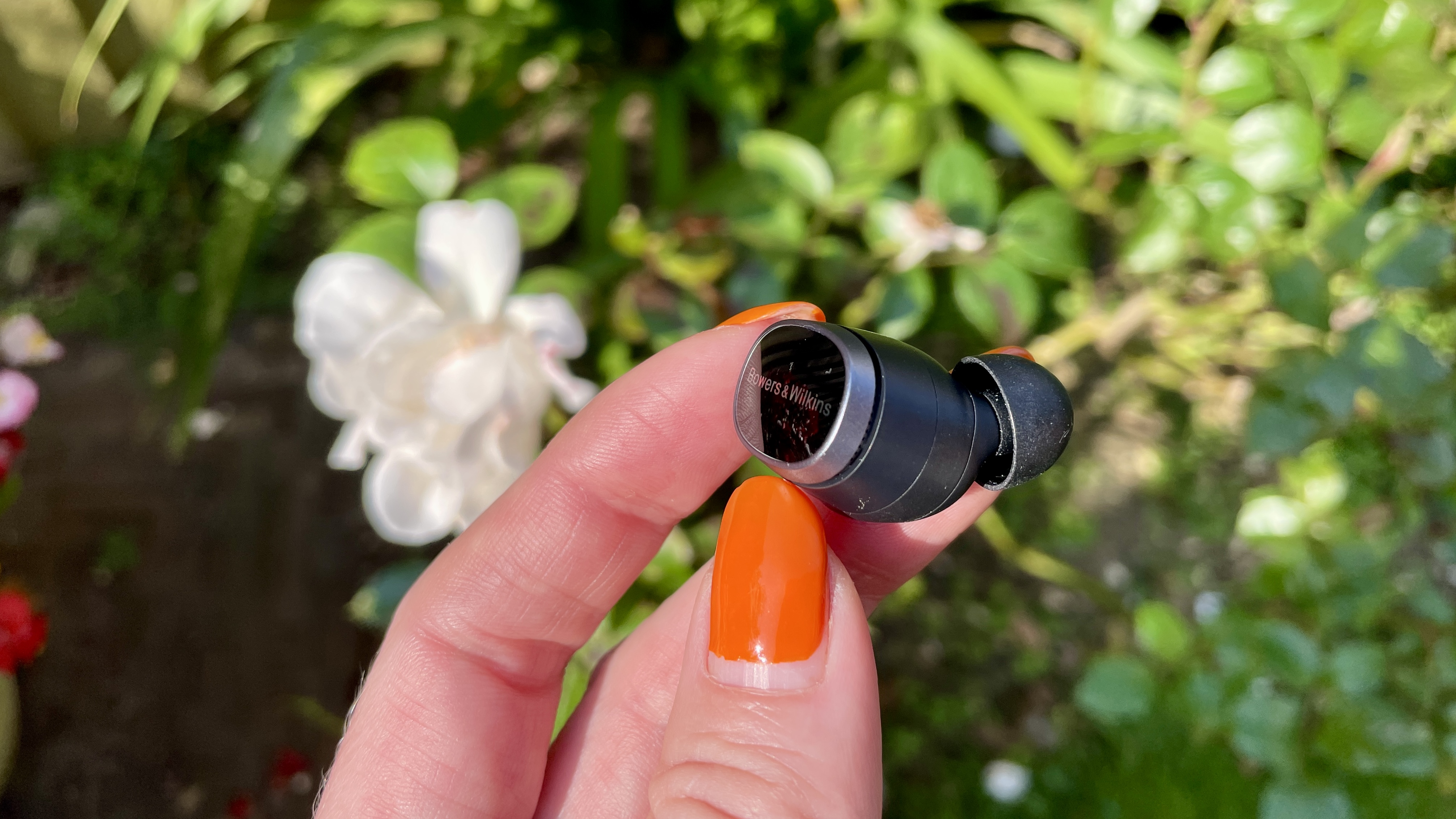
A quick bit about their corresponding Pi6 siblings, which were unveiled (as is B&W's tradition) on the same day: aptX Lossless support is reserved for the flagship Pi8. Also, while the slightly cheaper Pi6 feature new 12mm bio-cellulose drivers (based on tech used in the Bowers & Wilkins Px7 S2e, B&W's 2023 update to the aforementioned PX7 S2 over-ears), the Pi8 get an upgraded DAC, DSP and amplifier components from ADI, meaning they effectively bypass Qualcomm's digital-to-analog converter. You also get the carbon cone drive unit technology first used in the excellent top-tier PX8 over-ear headphones in the Pi8 – see the design language carried over from that in-house team?
The Pi8 also offer the case retransmission function first seen in the Pi7 and January 2023-issue Pi7 S2. This lets you ping audio to the earbuds wirelessly but without Bluetooth, from connected analog or digital sources, (in-flight entertainment systems, gym equipment, newer USB-C-enabled iPhones, and so on). It's not the first case capable of doing the retransmission dance – see the Jabra Elite 10 Gen 2 or LG Tone Free T90S for more examples – but B&W's case goes a step beyond, by retransmitting in aptX Adaptive (ie. up to 24-bit/96kHz quality). It's quite the upgrade if you care about streaming quality – and with earbuds as capable (and aspirational) as the Pi8, you really should.
Bowers & Wilkins Pi8 review: Price & release date
- Unveiled on August 21, 2024
- Priced $399 / £349 / AU$599
Admittedly, the Pi8 are not cheap. The best one can say about the asking price is that the 2021 Pi7 launched at the same $399 / £349 / AU$699, so it's refreshing to see that Bowers & Wilkins hasn't hiked the price – although that's still top-end in today's money, to be sure.
The cheaper Pi6 became available on September 15, priced at $249 / £219 / AU$449, which is more palatable, but remember that you don't get the flagship features or hardware, as detailed above.
What else can this kind of money buy? Why, competition is rife up here, friend! Bose's QuietComfort Ultra Earbuds come in at $299 / £299 / AU$449; Technics' excellent EAH-AZ80 are also in the same ballpark, at $299 / £259 / AU$499 and the Final ZE8000 MK2 (our pick for the best-sounding buds we've ever tested) are $399 / £289 (around AU$609), where available.
Suffice to say, it's tough at the top. But that's where B&W now finds itself – and the Pi8 are sitting rather prettily up there, it must be said.
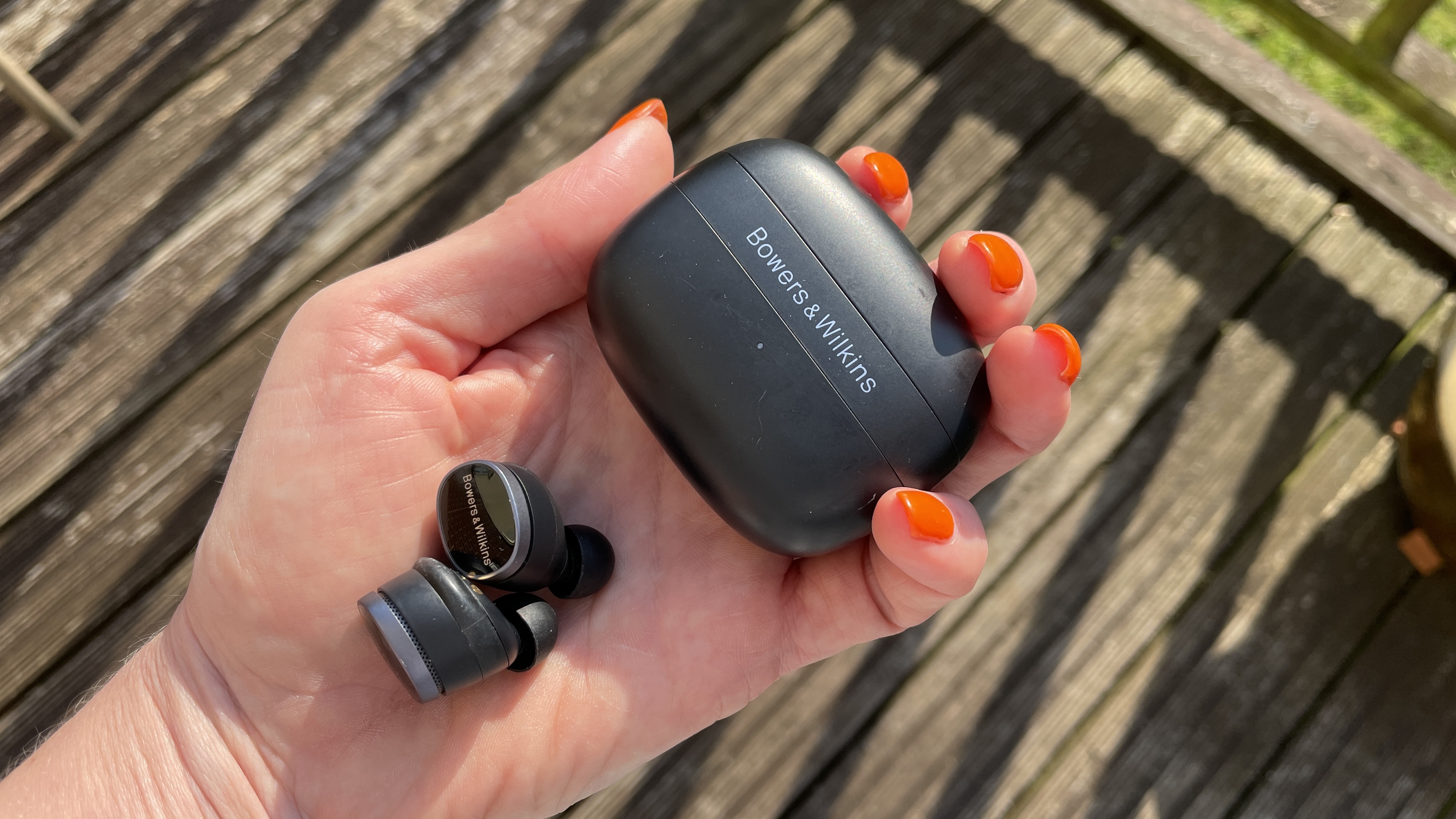
Bowers & Wilkins Pi8 review: Specs
Bowers & Wilkins Pi8 review: Features
- Excellent case retransmission feature
- Effective ANC
- Very good call-quality; Music App is a joy to use
Do the Pi8 nix noise as deftly as the Bose QuietComfort Ultra Earbuds or the AirPods Pro 2? For me, yes. As I understand it, the Pi8 have received quite the overhaul here – using tech from their PX8 over-ear siblings – and however B&W has implemented this, it works. That cocooned feeling of leaving the outside world behind kicked straight in but without any sense of wind-tunnel nausea or my eardrums being unceremoniously sucked into a vacuum. It's probably also thanks to the hugely improved fit and the seal it creates betwixt those talented drivers and my ear canals (more on this later), but you should know that here, the noise-cancelling is very good.
There’s also a useful 'Pass Through' mode, that lets me hear my colleague talking next to me. You can switch these profiles off entirely, but there’s no capacity to tweak the levels of ANC any further, and no 'adaptive' ANC option. I don't care. When the full-fat version is this good, why get granular and try to tweak things? If you just want something that kicks extraneous noise to the curb so you can revel uninterrupted in your sonic selections, the Pi8 are it.
Now, the case: aside from its no-nonsense, pocketable appeal, you can plug that USB-C port (USB-C to 3.5mm and USB-C cables are in the box) into a non-Bluetooth source, such as an in-flight entertainment system, and it'll double as a wireless audio re-transmitter but in aptX Adaptive transmission up to 24-bit/96kHz quality. Imagine the scene: you're in the middle seat on a long-haul flight, and the window-seat passenger wants to get out. It's fine! Your earbuds are safe in your ears, still sending audio, and your fellow passenger won't trip over long tangling cables – not on your watch!
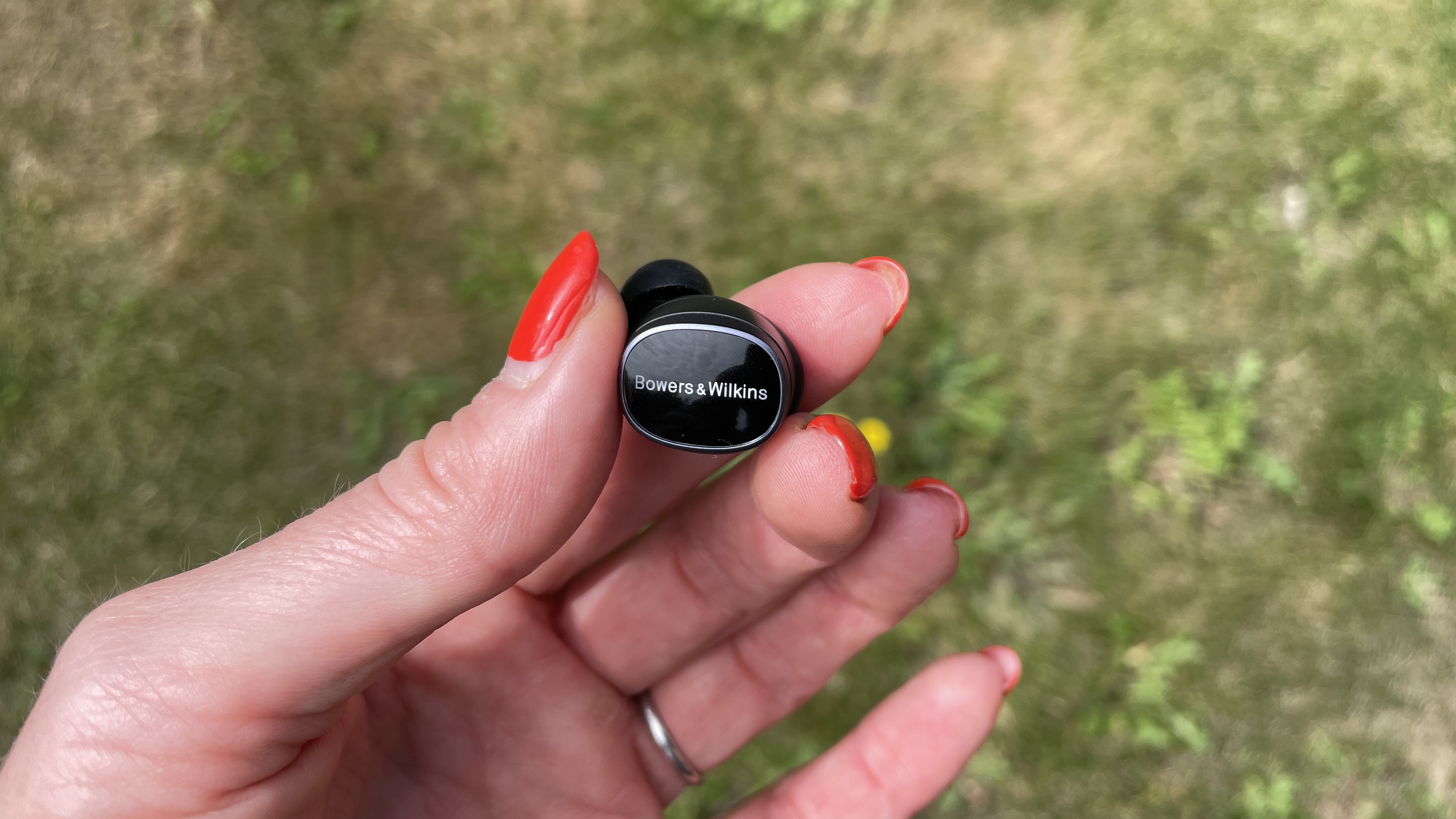
What about call quality? I liked it a lot, despite the lack of sidetone-type tech to either boost or minimize my own or the caller's voice manually. The Pi8 have three mics per earbud and B&W says the setup's been upgraded using PX8-flavor tech. For me, even during an off-shore windy day in Woolacombe (never been? It's on the UK's North Devon coastline, surfer hotspot, you should check it out), my caller told me I came through loud and clear.
It's worth noting that there are no ear-tip fit tests, hearing tests for creating personalized sound profiles, or proprietary spatial audio processing here. If you want those things, you'll need to look at options from Bose, JBL, or even Nothing. What you'll find instead is a very good five-band EQ tab and the talented Bowers & Wilkins Music app. This companion app will quickly become the way you access your music since it corrals all of your paid-for music streaming services (so I never need to go to Qobuz or Tidal specifically – it's all here!) and even serves up various "curated by Bowers & Wilkins" playlist selections for your new listening gear.
For better or worse, B&W wants the star of the show to be the untouched and unadulterated sound quality, rather than giving you ways to mess with it. The inclusion of Qualcomm’s latest and greatest Bluetooth 5.4 chipset is a testament to that. But remember, a separate high-performance dedicated DAC/DSP amp has also been thrown in, to swerve that within even the Qualcomm chip. That's the extent to which B&W has taken matters into its own hands regarding the sound quality. While it might not be an ideal proposition for those who know they need to augment certain frequencies right from the box (and would rather have B&W do it for them), those who don't need specific sonic recipes cannot fail to be wowed by the separation, neutrality and sonic clarity here.
If you've got an aptX-compatible source, you'll get much better wireless audio support too, including aptX Lossless and aptX Adaptive support at up to 24-bit/96kHz. And as you'll read below, the sound quality here is unparalleled from a wireless earbuds design.
- Features score: 4.5/5
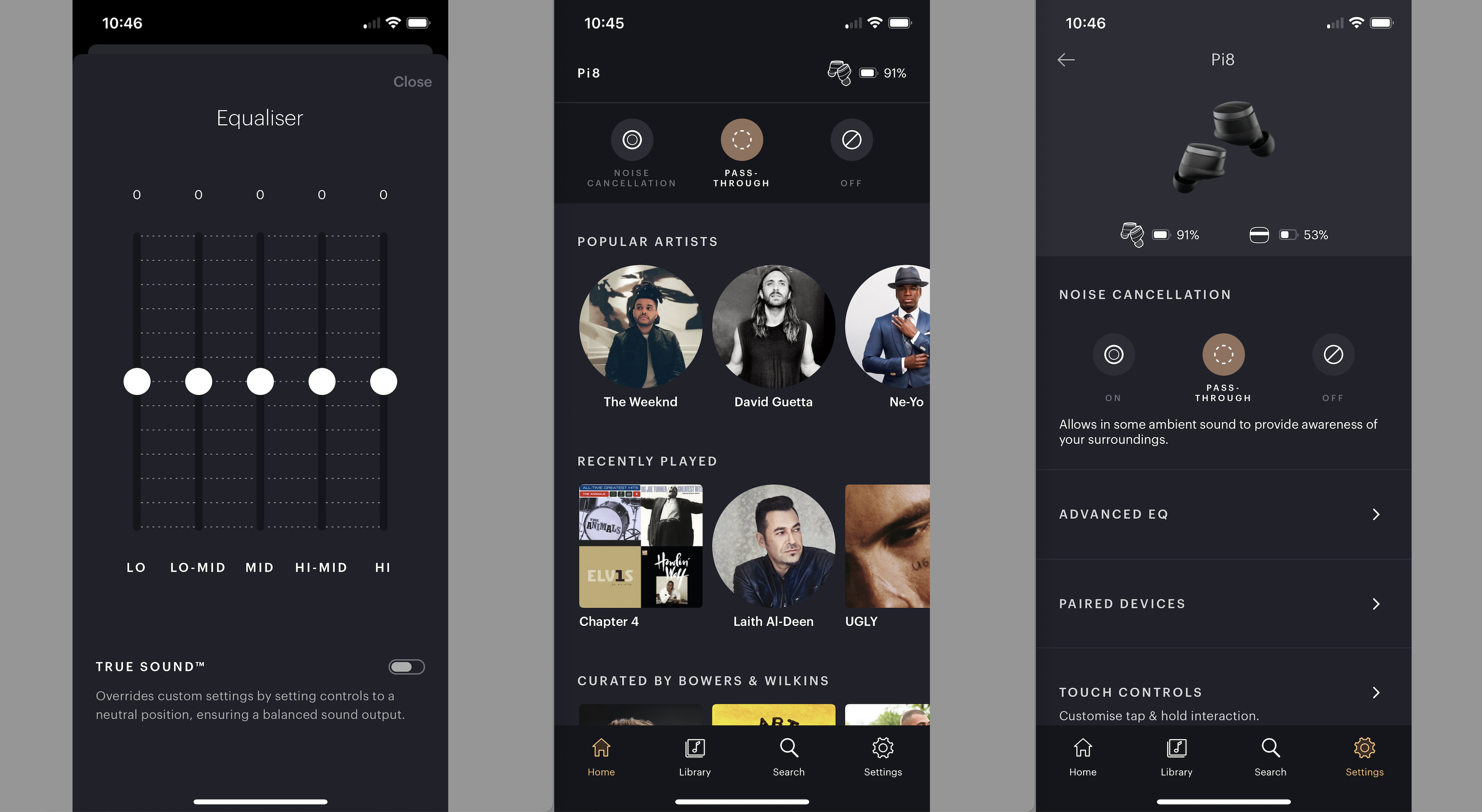
Bowers & Wilkins Pi8 review: Sound quality
- Separation, detail and clarity in spades
- Bass is resolute; mids textured
- Noise-cancellation doesn't mar the experience
Rarely will you read a TechRadar section entitled 'Sound' so wholly positive, so prepare yourself: no matter what genre of music I threw at them (and no matter the streaming source) it felt as if the B&W Pi8 had unpacked, weighed, opened out, examined, layered and finally presented my music with the skilled hand of a French pâtissier. The Pi8 buds also didn't seem to care whether they were working with lowly compressed Spotify streams, Tidal Max tracks, Apple Music offerings or Qobuz albums. Everything was served up with a flourish.
In Lupe Fiasco's Cake, bass frequencies in the vocals sink easily as low as Fiasco is able (which is considerable), revealing a bass floor few earbuds can take you to. During the title track, Samurai, I'm struck by the pin-point accuracy of each voice's placement in the mix. Hype men jump out from my ear lobes, my temples and beneath my chin in a raucous and zealous mix.
Switching to Stranger by Hinds and Grian Chatten, jangly guitars and Hinds' ethereal vocal stylings are present and have ample room to shine, joining each other in a cohesive mix but never competing for space. Chatten's voice joins centrally and I'm living inside my head as if at a gig, with the Fontaines D.C. front-man, well, literally in front of me…
Refreshingly, deploying ANC or pass-through doesn't make anything go sonically awry either. Bass is just as resolute in Gunna's collage with pass-through on, a profile that can so often throw a slightly tinny, sweet veil over the audio.
Any downsides? I'm struggling – and we pride ourselves on being tough critics here at TechRadar. For attack, drive, musicality, dynamic nuance, balance across the frequencies, placement, timing, and all the other things I usually talk about where sound is concerned, Bowers & Wilkins' considerable work and back-to-the-drawing-board approach has paid off. Oh, do these earbuds sound good…
- Sound quality score: 5/5
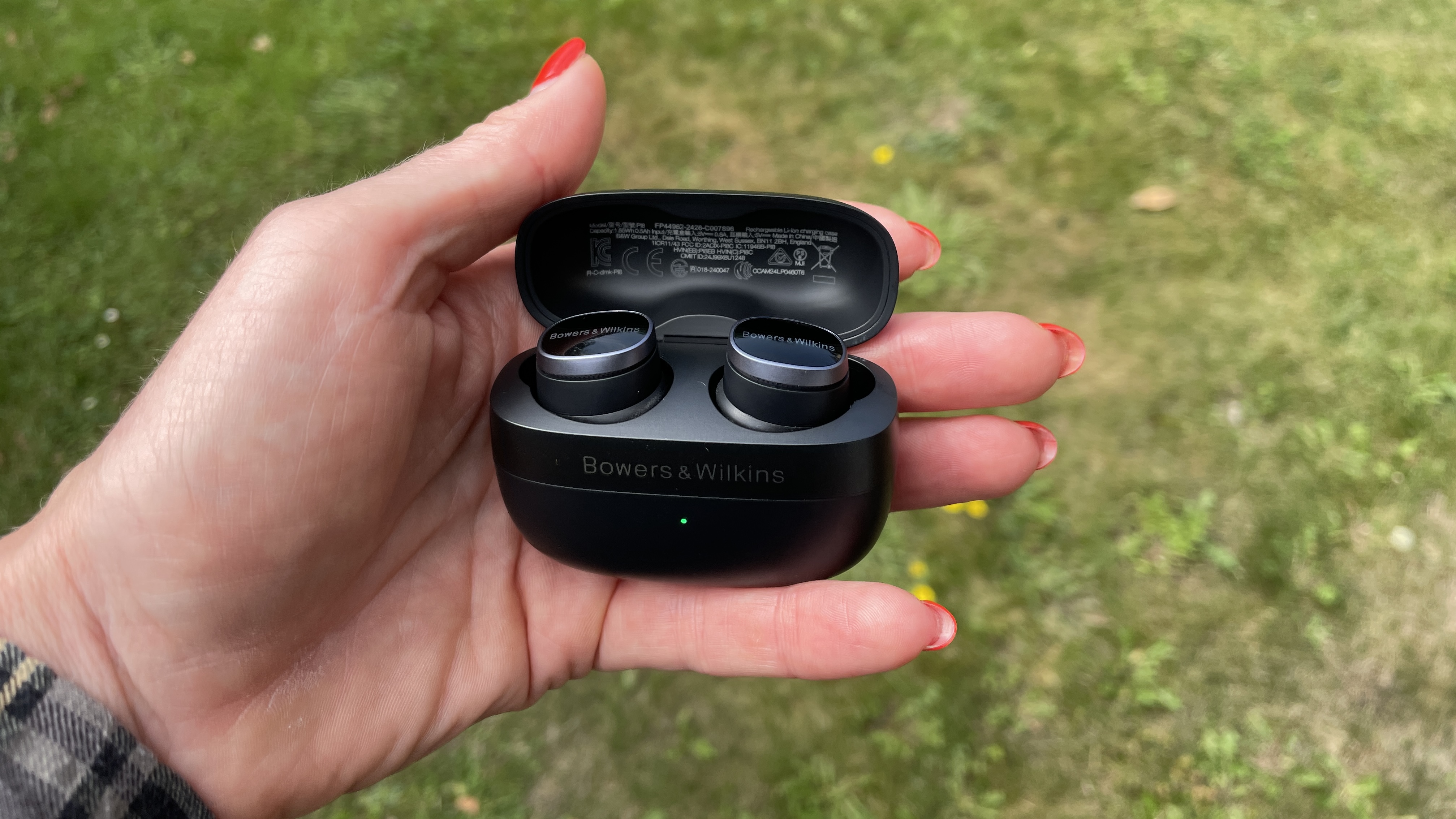
Bowers & Wilkins Pi8 review: Design
- Totally reworked driver housings – and it works
- On-ear functions require a compromise
- Pocketable case
While they might not look as resoundingly premium as the Swiss watch-esque Pi5 or Pi7, the redesign here was necessary. The top surface of each nicely-branded bud is a shiny touch-capacitive button that works very well.
The buds are available in Anthracite Black with silvery accents (the sample pictured here), Dove White, Midnight Blue and Jade Green. It's a plastic build, but of premium matte plastic that seems to murmur 'I'm expensive' when you pluck them from their small, pebble-shaped case.
Bowers & Wilkins came clean to me and admitted it needed to fix some issues in the older iterations: the mic and sensors on the older Pi7 models weren’t in the best position, meaning they could get blocked by the wearer. Remember my quote at the very top of this review? It takes a big company to admit to its mistakes, and it has all been fixed for Pi8.
There's now a little indentation containing a sliver of grille, running the entire circumference of each earpiece and directly under that touch capacitive top plate. Under it are those mics and sensors – as far away from your head and ear folds as it's possible to put them. Neat.
As noted previously, a brand new "trickled down from the PX8" carbon cone driver is at the helm here, and you get four silicone ear tip options in the box: extra small, small, medium and large. I switched to the small set, but since the neck of the earbud isn't long and the design has been so carefully conceived, I don't think the tip size is paramount here. Honestly? I truly feel that B&W has taken a long, hard, humble look at Technics' EAH-AZ80 with 'concha-fit' design for the Pi8. Why do I think this? Because, as with the Technics earbuds, they look a little bulky (and they do weigh 7g each, which isn't light) but they fit just as naturally and unobtrusively. The weight is distributed as evenly as possible so they feel as if they hug your outer ear, once in situ. Simply put: they fit beautifully, and you don't need to keep screwing them further down your delicate ear canal.
The Pi8 offer more battery life than their older siblings – but not much more. The maximum playtime is 6.5 hours from the earbuds and a further 13.5 hours from the case, for 20 hours of total use – but the good news is that those tests are with ANC on. Without it, I got closer to 8.5 hours from a single charge in my testing. For clarity, the Pi7 S2's stamina was 5 hours for the earbuds (ANC off) and an additional 16 hours from the charging case, for a 21-hour total.
I do have one minor negative though, and it's similar to the minor issue I encountered with the JBL Live Beam 3. Basically, you need to ditch a set of functions again. To clarify, you can now get on-ear volume control by long-pressing either Pi8 earbud, but to have it you need to forego scrolling through ANC profiles and access to your voice assistant. On the one hand, I love that I now get on-ear volume support. On the other, I'd also like to have the option to deploy ANC by touching the earbuds as well. And I know it's not too much to ask at this level because the Cambridge Audio Melomania M100 can do it.
That's where the complaints end though because when you add in that case retransmission feature, this is a very likeable, comfortable design from Bowers & Wilkins – and a complete rewrite of the playbook that I'm sure did not come easy.
- Design score: 4.5/5
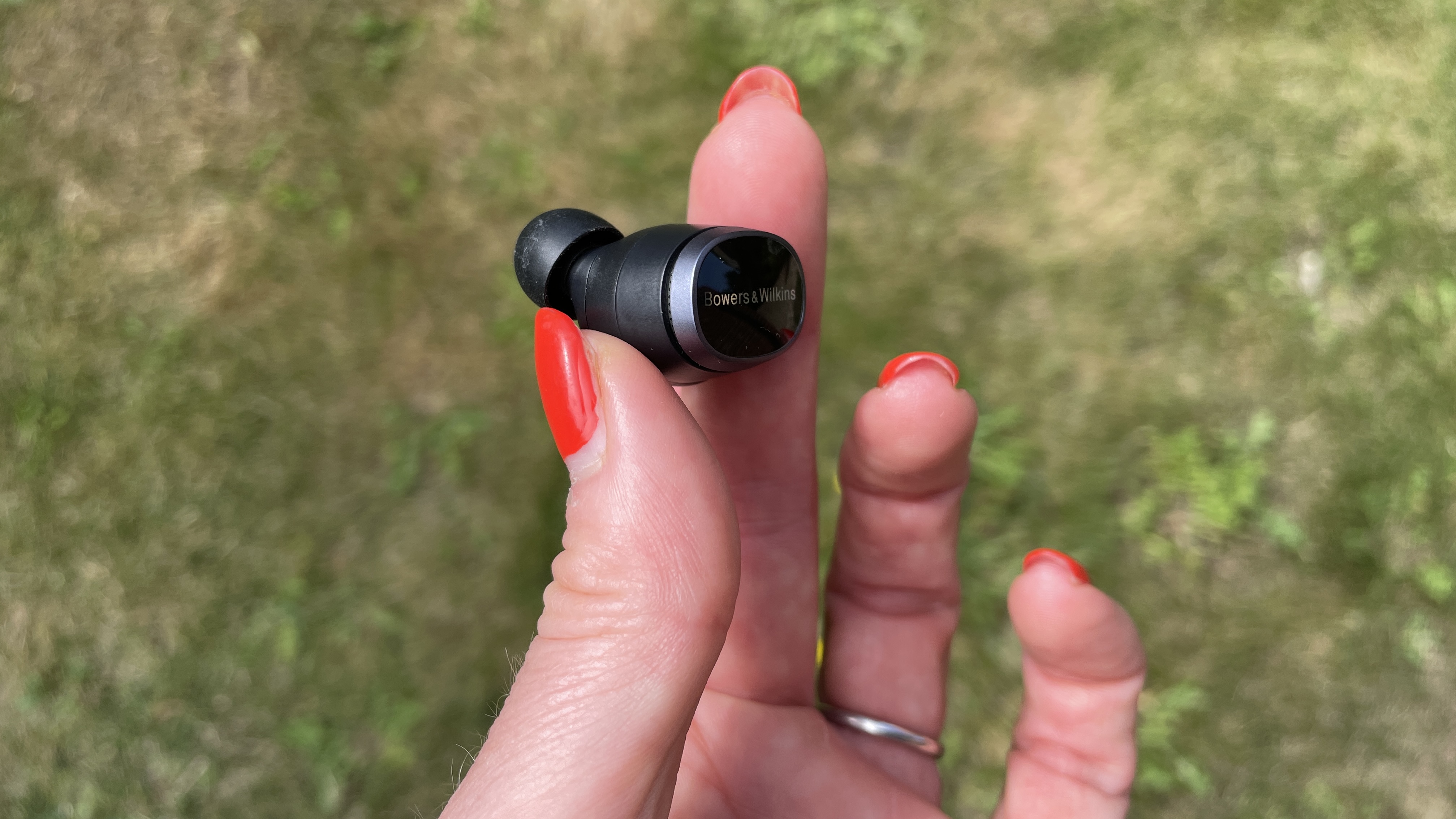
Bowers & Wilkins Pi8 review: Value
- Acceptable battery life given the excellent sound
- Sound-per-pound, they're winning
- If you want hearing tests, you'll be disappointed
The Bowers & Wilkins Pi8 are not cheap. They are earbuds for the listener who wants excellent, unchanged, high-quality audio in a comfortable build. If that's you, the sound here is the best I've heard in a wireless design to date. And if you've got a decent hi-res music service subscription, the B&W Music app will have at it and make your life very easy. Essentially, if you value sound quality above all else, here's where the smart money goes.
However, for battery life, the Pi8 can be beaten by recent options from JBL and Cambridge Audio, and if you want spatial audio mixed in with the ANC, you'll need to look to the Bose QuietComfort Ultra Earbuds.
Hearing tests (and the personalized sound profiles they can facilitate, from the Nothing Ear, for example) and ear-tip fit tests are also absent in the Pi8, so if those extras are high on your list of priorities, the value-for-money option lies elsewhere – possibly with Nothing; maybe even with the Denon PerL Pro.
- Value score: 4.5/5
Should I buy the Bowers & Wilkins Pi8?
Buy them if...
Don't buy them if...
Bowers & Wilkins Pi8: Also consider
How I tested the Bowers & Wilkins Pi8
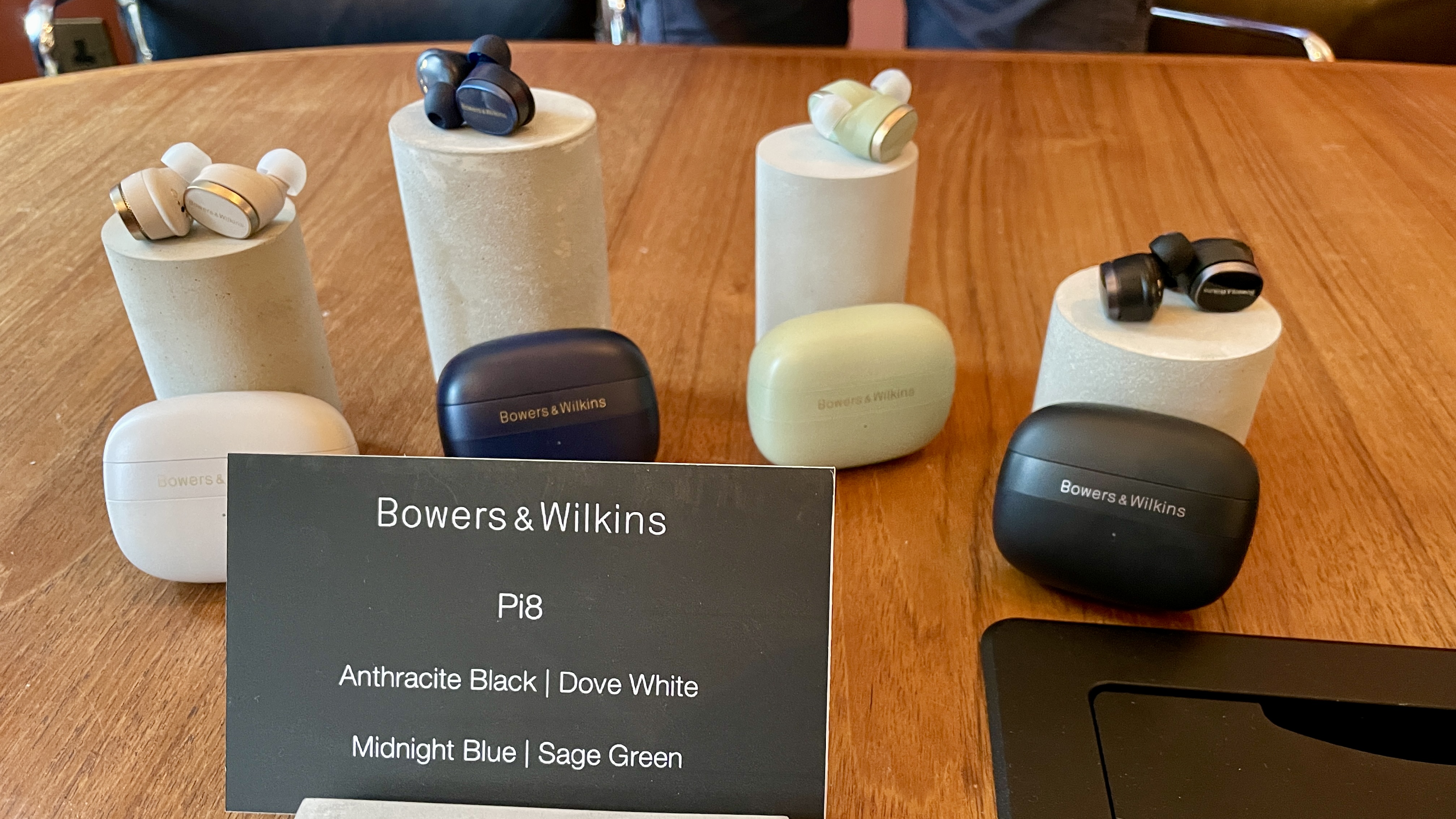
- Tested for three weeks; listened against the Cambridge Audio Melomania M100, AirPods Pro 2, JBL Live Beam 3 and Bose QuietComfort Ultra
- Used at work, at home and on a long weekend away (in the office, walking along Woolacombe beach, on a train)
- Listened to Tidal Masters, Apple Music Lossless tracks and Spotify on an iPhone 12 Pro, a Sony Xperia 1 V and a MacBook Pro
The Bowers & Wilkins Pi8 became my musical companions for over three weeks – after a thorough 48-hour run-in period.
They accompanied me to work on weekdays (walking brusquely to the station; on the London Underground network; at the office), and throughout a long weekend in Woolacombe, with regular trips along the seafront after surfing – which is a great way to test any wind interference from mics during calls.
To better test the fit and security of the Pi8, I even wore them during an aerial silks training session, and they did not budge.
To check the audio quality across the frequencies, I listened to various playlists (spanning everything from grime to classical) on Apple Music, Qobuz and Tidal, but also podcasts and albums on Spotify, and YouTube tutorials (mostly about checking the tire pressure on my car, and how to reset the system so the warning light goes off, in case you wondered) on my MacBook Pro.
I’ve been testing audio products well for over five years now. As a dancer, aerialist and musical theater performer in a previous life, sound quality, fit and user experience have always taken priority for me – but having heard how wonderful ANC can be when done well, I have grown to love immersing myself in a bubble of silence too.







